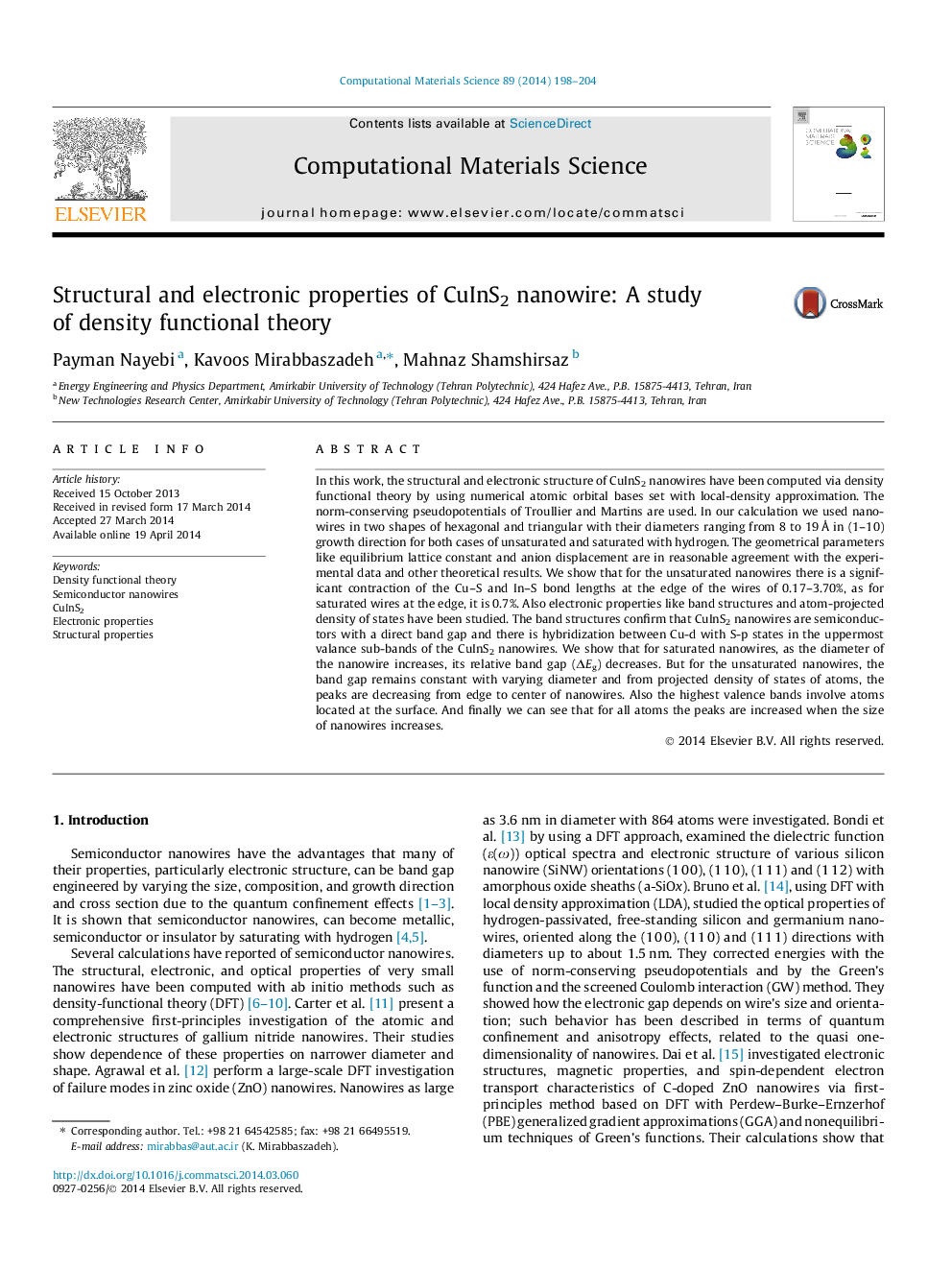| Article ID | Journal | Published Year | Pages | File Type |
|---|---|---|---|---|
| 1560599 | Computational Materials Science | 2014 | 7 Pages |
Abstract
In this work, the structural and electronic structure of CuInS2 nanowires have been computed via density functional theory by using numerical atomic orbital bases set with local-density approximation. The norm-conserving pseudopotentials of Troullier and Martins are used. In our calculation we used nanowires in two shapes of hexagonal and triangular with their diameters ranging from 8 to 19Â Ã
in (1-10) growth direction for both cases of unsaturated and saturated with hydrogen. The geometrical parameters like equilibrium lattice constant and anion displacement are in reasonable agreement with the experimental data and other theoretical results. We show that for the unsaturated nanowires there is a significant contraction of the Cu-S and In-S bond lengths at the edge of the wires of 0.17-3.70%, as for saturated wires at the edge, it is 0.7%. Also electronic properties like band structures and atom-projected density of states have been studied. The band structures confirm that CuInS2 nanowires are semiconductors with a direct band gap and there is hybridization between Cu-d with S-p states in the uppermost valance sub-bands of the CuInS2 nanowires. We show that for saturated nanowires, as the diameter of the nanowire increases, its relative band gap (ÎEg) decreases. But for the unsaturated nanowires, the band gap remains constant with varying diameter and from projected density of states of atoms, the peaks are decreasing from edge to center of nanowires. Also the highest valence bands involve atoms located at the surface. And finally we can see that for all atoms the peaks are increased when the size of nanowires increases.
Keywords
Related Topics
Physical Sciences and Engineering
Engineering
Computational Mechanics
Authors
Payman Nayebi, Kavoos Mirabbaszadeh, Mahnaz Shamshirsaz,
